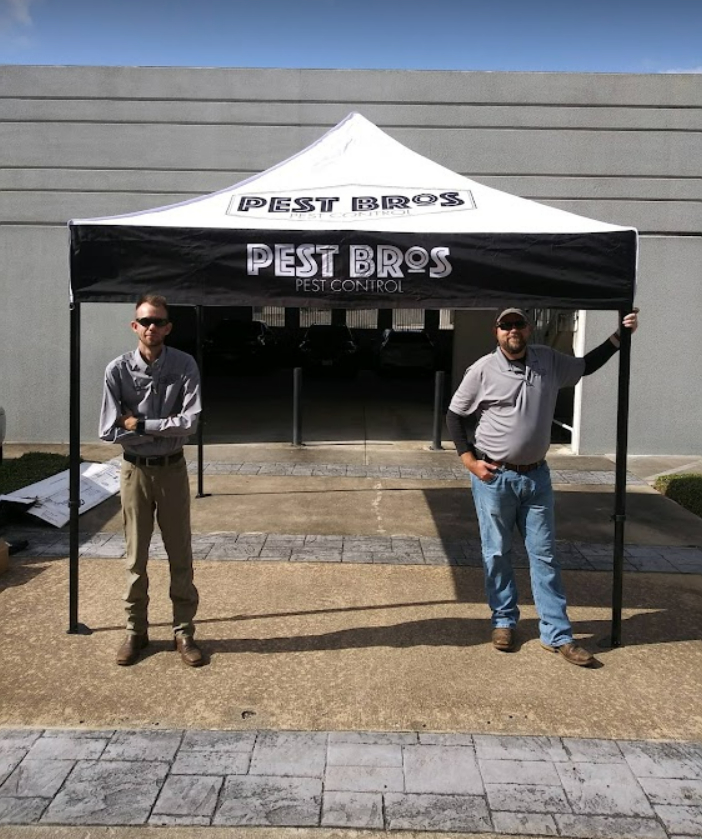

How Often Should Pest Control Be Done in Texas?
Living in Texas frequently entails dealing with various pests, from mosquitoes and ants to rats and termites. Regular pest control procedures are essential for maintaining a pest-free environment and protecting your home or business. However, identifying the best frequency for pest management might be difficult. In this blog post, We’ll look at some of the most often-asked questions about pest control in Texas, such as how long it is effective, how often should pest control be done, the waiting time after pest control, and what to expect following a pest control treatment.


How Often Should Pest Control Be Done?
To have a pest-free environment in Texas, pest treatment should be performed regularly. The frequency of treatments is influenced by factors such as geographic location, climate, seasonal insect activity, and property characteristics. Quarterly treatments are a standard suggestion for basic pest management, although tailored regimens may be required based on specific needs. Regular inspections are also essential for detecting early signs of pest activity and adjusting treatment frequency as needed. Working with a professional pest control company ensures successful pest treatment and peace of mind.
How Long Is Pest Control Good For?
Pest management treatments are intended to eradicate existing pests while preventing new infestations. However, the lifetime of pest control success depends on various factors, including insect kind, treatment method, and climatic circumstances.
Most pest control treatments last one to three months for common household pests, including ants, cockroaches, and spiders. These treatments often entail the application of residual pesticides that act as a pest barrier. The effectiveness of these treatments may wane over time as the chemicals degrade or are eliminated by washing or weather conditions. To keep your surroundings pest-free, schedule routine maintenance treatments every three months or as your pest control professional recommends.
However, some treatments, such as termite prevention methods, can give long-term protection. Termite treatments frequently include the use of termiticides or the installation of termite bait systems. These treatments establish a long-lasting termite barrier and can even provide protection for up to five years. To discover the specific length of effectiveness for your treatment, speak with a certified pest control service.
Should Pest Control Be Done Annually?
While pest control treatments can be helpful for a few months, annual pest control services are recommended as a preventive strategy. Yearly pest control treatments aid in the prevention of pest infestations by identifying prospective pest issues before they become full-fledged infestations. Because Texas’s mild temperature is favorable for pest breeding, frequent pest management is a proactive strategy to avoid more significant pest problems.
Annual pest management creates a continuous barrier against pests and allows you to address any emerging issues quickly. Professional pest control professionals will assess your property, identify possible problem areas, and give targeted pest control treatments to keep pests at bay. Regular treatments also allow you to reevaluate your pest control approach and make any necessary changes depending on seasonal changes or evolving pest pressures.
How Many Hours Should I Wait After Pest Control?
Allow enough time after a pest control treatment for the chemicals or treatments to dry and take effect. The time spent waiting after pest control varies based on the treatment method used and the bug being controlled. Avoid the treated area for two to four hours. However, following the pest control professional’s advice is critical since they will have the most up-to-date information on the treatment. They may also advise on precautions, such as covering food or keeping dogs away from the treated area.
Ensure appropriate ventilation during the waiting period by opening windows or utilizing fans to aid in the drying process. This will assist in dispelling any residual odors or vapors from the therapy. Please contact your pest control service with any issues or questions concerning the waiting period or measures.
What to Expect After Pest Control Treatment?
It’s reasonable to be concerned about the aftereffects of pest control treatments. Here are some examples of common encounters:
Decreased Pest Activity
Depending on the infestation’s degree, you may observe a significant decrease in pest activity quickly after treatment. The chemicals or treatments will disrupt the insect’s life cycle, kill current pests, and build a barrier against future infestations. However, total eradication may take some time, mainly if the treatment includes baiting methods or several visits. Continued monitoring and, if necessary, follow-up treatments will help assure long-term pest control success.
Get More Information: What Is The Most Common Pest In Texas?
Persistent Odor
Some pest control chemicals may leave a lingering odor after treatment. The smell is usually caused by the chemicals employed and will fade with time. Opening windows or utilizing fans to ventilate the area can assist in speeding up the process. Contact your pest control professional with concerns about specific products or odors. They can inform you about the products and handle any residual odor concerns.
Ongoing Monitoring
Pest control treatments are not a one-and-done solution. It’s critical to keep up with frequent inspections and follow-up treatments as directed by the pest control company. Pests may resurface, or new infestations may arise even after the initial treatment. Regular monitoring enables the early discovery of any indicators of pest activity, allowing for quick intervention to avert a full-fledged infestation. You may sustain long-term pest control success by remaining watchful and addressing concerns as they arise.
Preventive Measures
Besides professional pest control treatments, preventive measures must be implemented to reduce the danger of future infestations. Sealing cracks and gaps, efficient waste management, reducing standing water sources, and maintaining a clean and clutter-free workplace are all part of this. Your pest control specialist can advise you on specific preventive measures based on the common pests in your area and the vulnerabilities of your property.
Takeaways
Maintaining regular pest control is essential for a pest-free environment in Texas. The frequency of pest control treatments relies on various factors, such as the type of pests, the severity of infestations, and the unique needs of your property. At The Pest Bros, we understand the importance of keeping your Texas home or business free from unwanted pests.
Our team of experienced exterminators is well-versed in the challenges Texas pests pose. We offer tailored pest control solutions to address your needs and provide long-lasting results. Whether you’re dealing with ants, termites, rodents, or any other pests, our experts have the knowledge and expertise to handle them efficiently.




